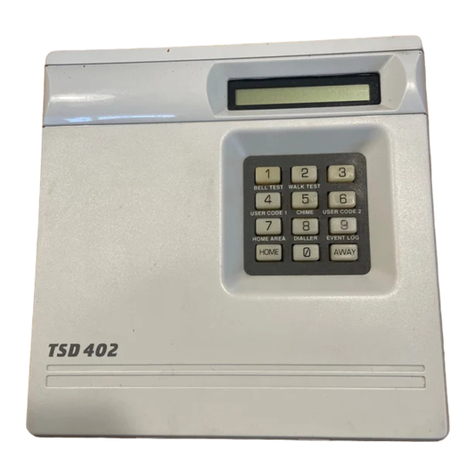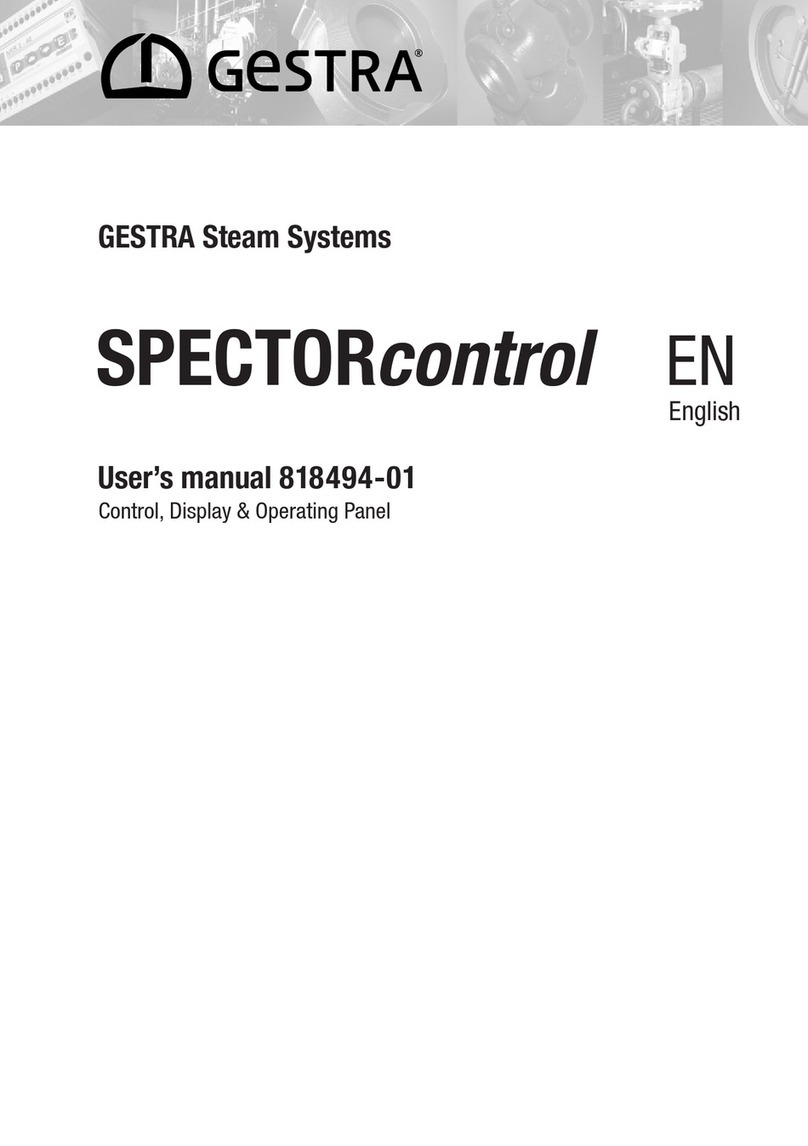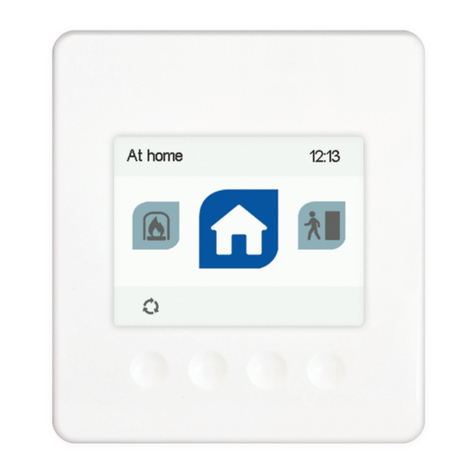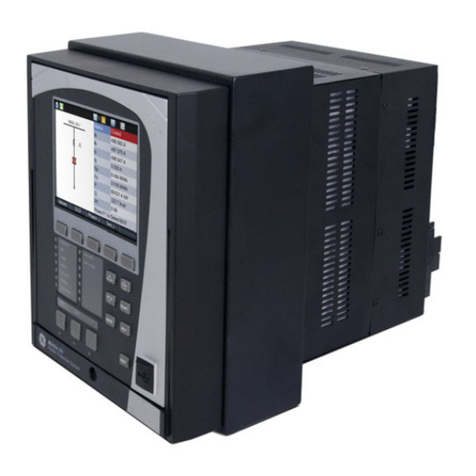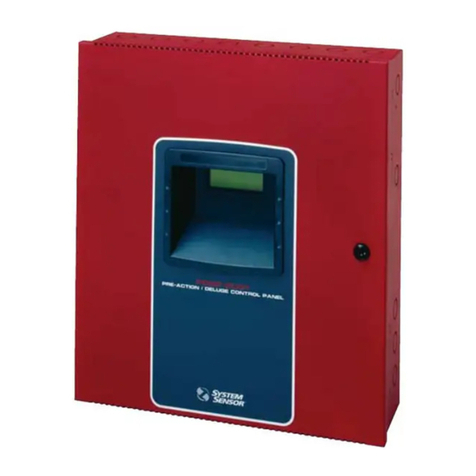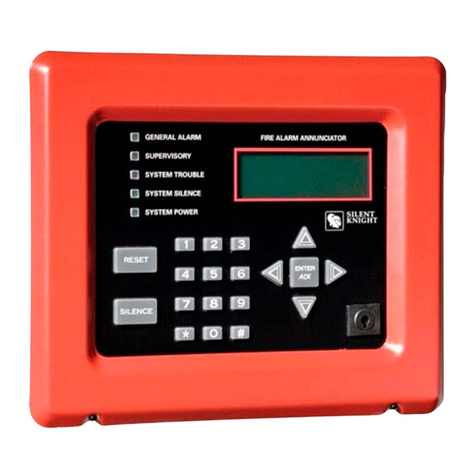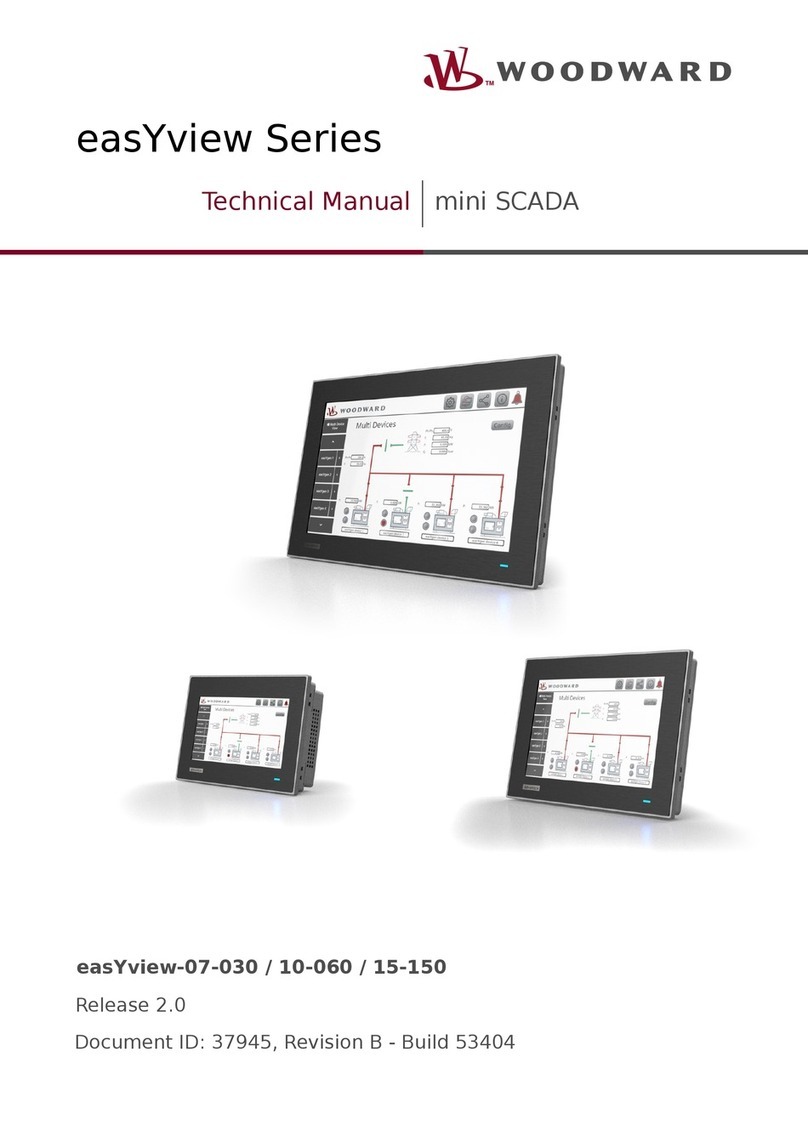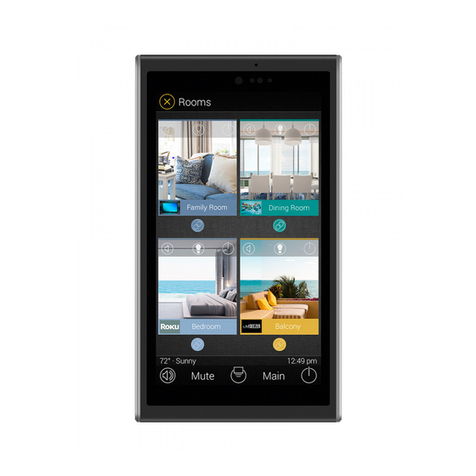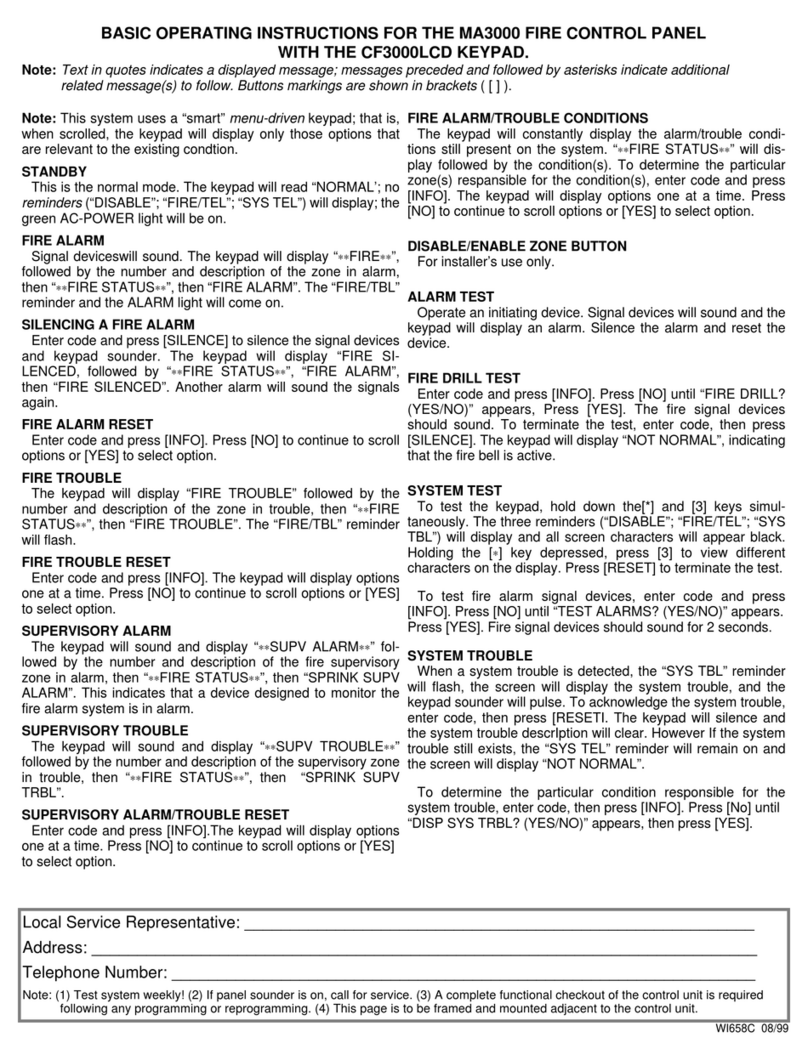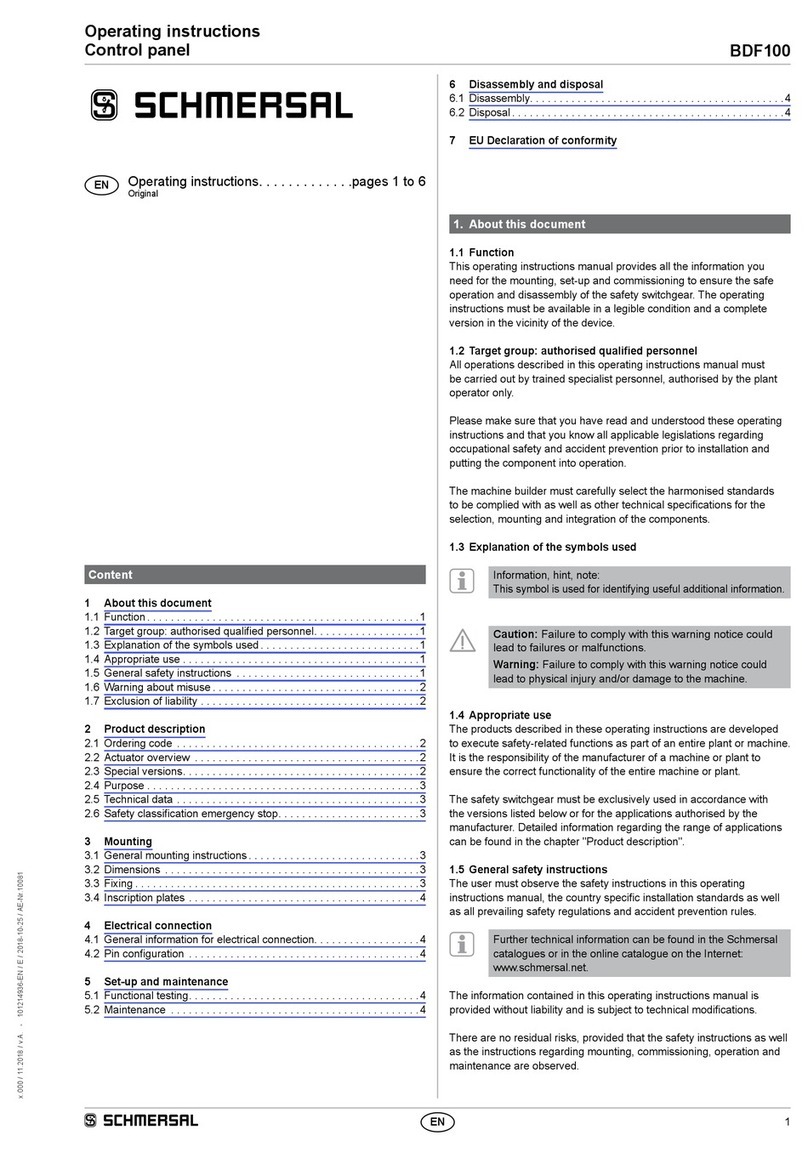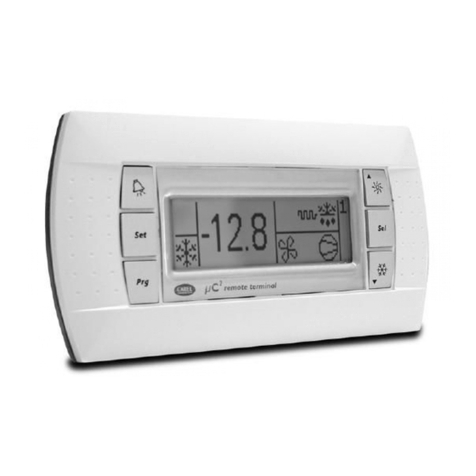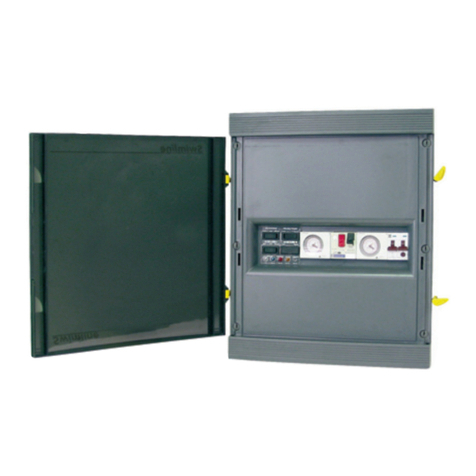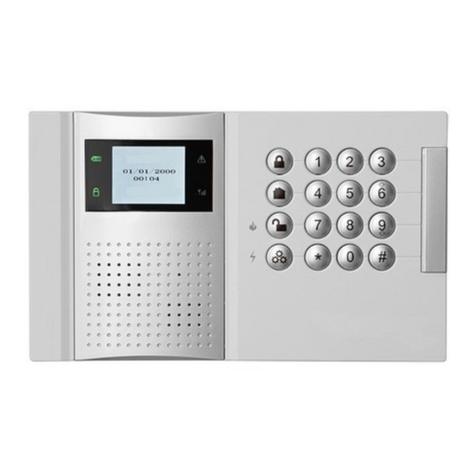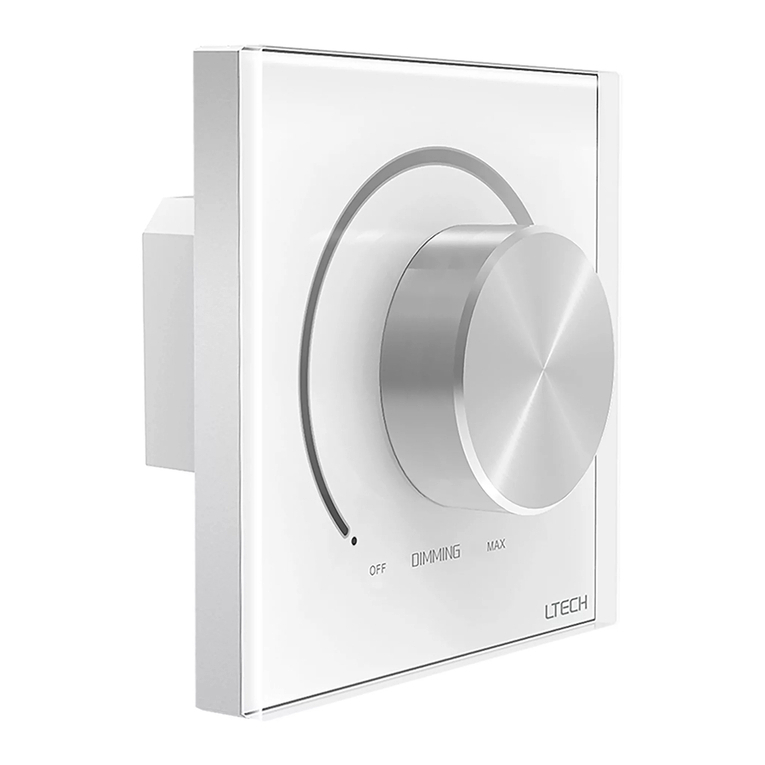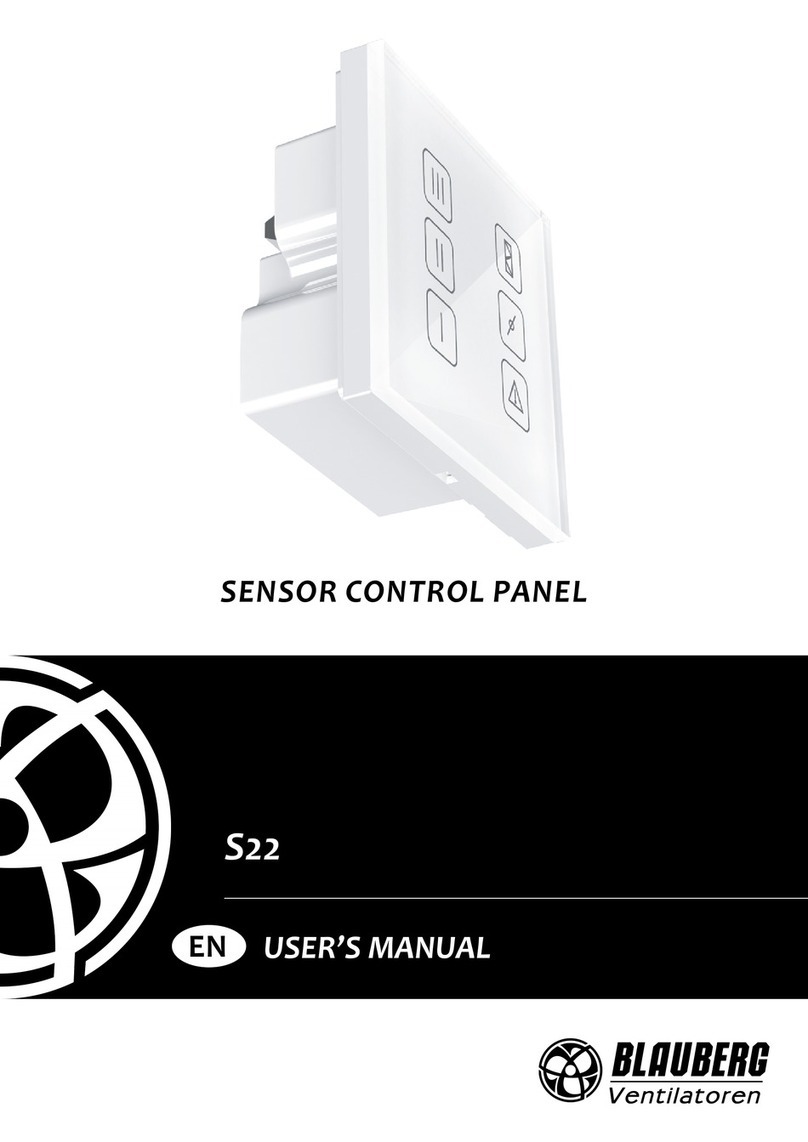Menvier Security TS400 Installation manual

TS400 & TS410
Intruder Alarm Control Panels
Installation & Programming
Instructions
HOME 0AWAY
789
564
123
12 345
UNSET TAMPER FINAL EXIT

Contents
Overview
Introduction . . . . . . . . . . . . . . . . . . . . . . . . . 3
TS400 Features . . . . . . . . . . . . . . . . . . . . . . . 3
TS410 Features . . . . . . . . . . . . . . . . . . . . . . . 3
Specifications. . . . . . . . . . . . . . . . . . . . . . . . 3
TS400 Control Panel . . . . . . . . . . . . . . . . . 3
TS410 Control Panel . . . . . . . . . . . . . . . . . 3
Remote Keypad. . . . . . . . . . . . . . . . . . . . 3
Planning The Installation
General . . . . . . . . . . . . . . . . . . . . . . . . . . . . 4
Cable Routing . . . . . . . . . . . . . . . . . . . . . . . 4
TS400 Control Panel . . . . . . . . . . . . . . . . . . . 4
TS410 Control Panel . . . . . . . . . . . . . . . . . . . 4
External Sounder. . . . . . . . . . . . . . . . . . . . . . 4
Remote Keypad. . . . . . . . . . . . . . . . . . . . . . 4
Detection Devices . . . . . . . . . . . . . . . . . . . . 5
Passive Infra-Red (PIR). . . . . . . . . . . . . . . . 5
Magnetic Contacts . . . . . . . . . . . . . . . . . 5
Personal Attack (PA) Button . . . . . . . . . . . . 5
Vibration Detectors. . . . . . . . . . . . . . . . . . 5
Smoke/Heat Detectors . . . . . . . . . . . . . . . 5
Final Exit . . . . . . . . . . . . . . . . . . . . . . . . . . . . 5
Auxiliary Tamper . . . . . . . . . . . . . . . . . . . . . . 5
Keyswitch . . . . . . . . . . . . . . . . . . . . . . . . . . . 5
System Installation
Installing the TS400 Control Panel. . . . . . . . . 6
Installing the TS410 Control Panel. . . . . . . . . 6
Mains Connection . . . . . . . . . . . . . . . . . . . . 7
Battery Connection . . . . . . . . . . . . . . . . . . . 7
PCB Layout. . . . . . . . . . . . . . . . . . . . . . . . . . 8
Multiple Detectors on the same Zone . . . . . 9
Door Contacts . . . . . . . . . . . . . . . . . . . . . 9
Passive Infra-Red. . . . . . . . . . . . . . . . . . . . 9
Auxiliary Tamper . . . . . . . . . . . . . . . . . . . . . . 9
Wiring Example. . . . . . . . . . . . . . . . . . . . . . . 10
Installing a Remote Keypad. . . . . . . . . . . . . 11
External Sounder Connections . . . . . . . . . . . 11
Extension Loudspeakers . . . . . . . . . . . . . . . . 12
ALM- Terminal. . . . . . . . . . . . . . . . . . . . . . . . 12
RST- Terminal. . . . . . . . . . . . . . . . . . . . . . . . . 12
Detector Reset (DTR RST) . . . . . . . . . . . . . . 12
Switched 12V (SW12V). . . . . . . . . . . . . . . . 12
Aux 12V Power . . . . . . . . . . . . . . . . . . . . . . . 12
SD1(Optional) . . . . . . . . . . . . . . . . . . . . . . . . 12
Initial Power-Up. . . . . . . . . . . . . . . . . . . . . . . 13
Programming
Programming Menus . . . . . . . . . . . . . . . . . . 14
Program Zones. . . . . . . . . . . . . . . . . . . . . . . 15
Alarm . . . . . . . . . . . . . . . . . . . . . . . . . . . . 15
Access . . . . . . . . . . . . . . . . . . . . . . . . . . . 15
Keyswitch . . . . . . . . . . . . . . . . . . . . . . . . . 15
Fire . . . . . . . . . . . . . . . . . . . . . . . . . . . . . . 15
P.A.. . . . . . . . . . . . . . . . . . . . . . . . . . . . . . 15
View Event Log. . . . . . . . . . . . . . . . . . . . . . . 15
Walk Test. . . . . . . . . . . . . . . . . . . . . . . . . . . . 15
Exit Time . . . . . . . . . . . . . . . . . . . . . . . . . . . . 16
Entry Time. . . . . . . . . . . . . . . . . . . . . . . . . . . 16
Bell Duration Time. . . . . . . . . . . . . . . . . . . . . 16
Change Engineer’s Passcode . . . . . . . . . . . 16
Remote Reset Number. . . . . . . . . . . . . . . . . 17
System Options. . . . . . . . . . . . . . . . . . . . . . . 17
Bell Output . . . . . . . . . . . . . . . . . . . . . . . . 17
Setting Mode . . . . . . . . . . . . . . . . . . . . . . 17
Reset Authority . . . . . . . . . . . . . . . . . . . . . 17
System Re-arms . . . . . . . . . . . . . . . . . . . . 17
Keyswitch Operation. . . . . . . . . . . . . . . . . 18
RST- Output. . . . . . . . . . . . . . . . . . . . . . . . 18
Returning to the Unset Mode . . . . . . . . . . . . 18
Full Setting the System (AWAY) . . . . . . . . . . . 18
Part-Setting the System (HOME) . . . . . . . . . . 18
Unsetting the System . . . . . . . . . . . . . . . . . . 18
Testing & Fault Finding
Testing the System . . . . . . . . . . . . . . . . . . . . 19
Fault Finding. . . . . . . . . . . . . . . . . . . . . . . . . 19
Chart 1 - Zone Faults . . . . . . . . . . . . . . . . . . 20
Chart 2 - System Will Not Set. . . . . . . . . . . . . 21
Chart 3 - External Sounder Faults . . . . . . . . . 22
Installation Records
System Programming Record. . . . . . . . . . . . 23
2
TS400/TS410 Installation Instructions

Overview
Introduction
The TS400 and TS410 are 6 zone microprocessor
based intruder alarm control panels with 5
programmable zones and a dedicated Final Exit
zone. The ease of operation for setting and
unsetting lends itself ideally to domestic and
smaller commercial installations.
TS400 Features
l5 Programmable zones Night, Access, Fire, PA
& Keyswitch (plus common tamper)
lDedicated Final Exit zone
lOn board keypad and LED indicators
lUp to 4 remote keypads
lFacilitiestoconnecttoanSD1SpeechDialler
l4 event log
lProgrammable output for vibration detectors
or latching PIRs
lDual user codes
lRemote Reset facility
l2.1 Ah battery capacity
lAll data stored in Non-Volatile Memory (NVM)
TS410 Features
l5 Programmable zones Night, Access, Fire, PA
& Keyswitch (plus common tamper)
lDedicated Final Exit zone
lBlind control panel supplied with 1 remote
keypad with the option to support up to 4.
lFacilitiestoconnecttoanSD1SpeechDialler
l4 event log
lProgrammable output for vibration detectors
or latching PIRs
lDual user codes
lRemote Reset facility
l7.0 Ah battery capacity
lAll data stored in Non-Volatile Memory (NVM)
Specifications
TS400 Control Panel
Input Voltage: 240V ±10% 50Hz
Current: 40mA (normal) 85mA (alarm)
Power Supply: 750mA
Standby Battery: 2.1Ah
Dimensions: 205 (W) x 205 (H) x 64 (D) mm
Material: 3mm polycarbonate
Weight: 1.2 Kg
Environment: 0 - 55°C
TS410 Control Panel
Input Voltage: 240V ±10% 50Hz
Current: 40mA (normal) 85mA (alarm)
Power Supply: 750mA
Standby Battery: 7.0Ah
Dimensions: 242 (W) x 237 (H) x 86 (D) mm
Material: 1.2mm mild steel
Weight: 2.6 Kg
Environment: 0 - 55°C
Remote Keypad
Current: 35mA (normal) 50mA (alarm)
Dimensions: 130 (W) x 130 (H) x 30 (D) mm
Material: 3mm Polycarbonate
Weight: 415g
Environment: 0 - 55°C
3
TS400/TS410 Installation Instructions Overview

Planning The Installation
General
TheTS400 and TS410are flexible systems,but care
must be taken in planning the installation to
provide maximum protection with minimum
effort.
Survey the household and determine where each
security device is to be fitted. Wherever possible,
trytoconcealwiring(e.g.,intheloft,undercarpets
orfloorboardsandinsidecupboards).Committhe
system design to paper for future reference.
Cable Routing
When installing cables, the following should be
noted:
lEnsure that all cables are kept clear of mains
supply cables, telephone cables, cables
supplying bells or sounders and any cables
likely to induce electrical noise (R.F.) into the
system.
lScreened cable may prove necessary if
cablesare run adjacent tocables which carry
R.F. (electrical noise) or are switching high
current loads.
lThe mains power supply cable to the system
must be connected to an un-switched fused
spurthatcannot be accidentally switched off.
The mains cable must enter the control panel
housing via its own cable entry point.
TS400 Control Panel
The TS400 control panel should be located in a
position where it has easy access for the users to
set and unset the system. It should by mounted at
a level where it is easy to operate the keypad and
read the indicator LEDs. The provision for
connecting to a permanent mains supply must
also be considered.
Whenoperatingthesystemitshouldbepossibleto
hear the exit and entry tones throughout the entry
& exit route and outside the final exit door. If the
control panel is positioned a long way from the
final exit door, it may be necessary to fit an
extension loudspeaker.
TS410 Control Panel
TheTS410controlpanel is blind panel and assuch
it can positioned out of view, normally in a
cupboard under the stairs. The provision for
connecting to a permanent mains supply must
also be considered.
Whenoperatingthesystemitshouldbepossibleto
hear the exit and entry tones throughout the entry
& exit route and outside the final exit door. If the
remote keypad is located a long way from the
final exit door, it may be necessary to fit an
extension loudspeaker.
External Sounder
The external sounder should be mounted as high
as possible so that it is visible and out of reach to
potential intruders. A six-core cable is required for
connection to the sounder which should enter
directly through the wall and into the sounder via
thecableentries in the back plate.However,ifthe
cable is run over the surface to the sounder then it
should be protected (e.g., the cable may be run
in aluminium conduit).
Remote Keypad
If required, up to four remote keypads may be
connected to the system to allow remote
operationof the system.Theremotekeypadhas 8
LED indicators and an internal sounder to indicate
all system tones. Remote keypads require a
six-core cable for connection.
4
Planning The Installation TS400/TS410 Installation Instructions

Detection Devices
There are several types of detection devices
available which are suitable for domestic
installations as follows:
Passive Infra-Red (PIR)
A detector which detects movement of an
intruder by the change in infra-red body heat.
WhenfittingPIRs,refertotheinstallationinstructions
supplied with the unit. In general there are two
types of PIR "Standard" and "Latching". Normally
the standard type is used where one detector per
zone is fitted and a six-core cable is required for
connection. The latching type is used when more
than one detector is fitted to a zone, the latch
facility allows the user to identify the triggered
detector by means of the indicator LED on the
detector "latching" on. If latching detectors are
used an eight-core cable is required for
connection.
Magnetic Contacts
Magnetic contacts consist of an electrical switch
whichisoperatedby a magnet. They comeintwo
versions, the "Flush" type is designed to be fitted
into the top or side of the door/window. The
"Surface" type is designed to fitted to
doors/windows where it is not possible to use flush
contacts e.g. garage doors, UPVC windows etc.
Both types of contacts require a four-core cable
for connections.
Personal Attack (PA) Button
Normally PA buttons are located by the front door
or adjacent to the bed, and preferably out of
reach to small children. Pressing the button at any
time will generate a full alarm. Some PA buttons
autoresetandsomerequireakeytoresetthem.In
both cases the control panel must be reset. PA
buttonsrequireafour-corecableforconnections.
Vibration Detectors
Vibration detectors are normally fitted to windows
or door frames. They are triggered when the
device senses a shock attack. Vibration detectors
require a six-core cable for connections.
Smoke/Heat Detectors
12V Smoke or heat detectors may be connected
to the system to provide additional protection
against fire. When activated a distinctive internal
sounder tone is generated and the external
sounder is pulsed. Smoke detectors require a
four-core cable for connections.
Final Exit
Thisis the point at which the user leaves and enters
the premises (normally the front door). When
setting the system the user must leave the
protected area via the exit route and through the
Final Exit zone. When re-entering the premises the
user must activate the Final Exit zone to start the
entry timer which allows the user time to gain
access to the control panel to unset the system. If
the user enters the premises through any other
point and triggers a detection device a full alarm
will be generated. The system may be
programmedto setaftertheexit timerhasexpired
or by the operation of the Final Exit detection
device.
Auxiliary Tamper
The tamper protection for all zones and any
auxiliary devices such as the speech dialler must
be wired in a continuous loop and then be
connected to the auxiliary tamper terminals.
Keyswitch
An optional keyswitch may be fitted to the system
to allow the user to set and unset (or part-set and
unset) the system using a physical key rather than
a four digit passcode.
5
TS400/TS410 Installation Instructions Planning The Installation

System Installation
Installing the TS400 Control Panel
1. Remove the screw from the top of the control
panel and lift away the front cover.
2. Ensure that there is no battery in the housing,
then remove the circuit board as follows:
(a) Disconnect the yellow leads from the
transformer and remove the connections
to the internal loudspeaker.
(b) Pulldowntheplasticclipatthebottomright
handcornerofthecircuitboardandgently
lift the board forward.
(c) Repeat with the plastic clip at the bottom
left hand corner of the circuit board.
(d) The bottom of the circuit board will then
swing forward and can be removed from
the base.
3. Hold the base in the required position and
mark the centre of the keyhole. Remove the
base, then drill and plug the holes. Note:
Remember to allow enough room to get the
cover screw in to top of panel when mounting
the base.
4. Re-position the base and secure to the wall
using not less than 30mm x No 10 screws.
5. Re-fit the circuit board assembly by aligning
the top of the board into the 2 supports in the
top of the housing ensuring that the edges of
theboardsitbetween the 2 flanges, thenpush
thebottomofthecircuitboarduntilitclicksinto
place.
6. Re-connecttheyellowleadstothetransformer
and re-connect the internal loudspeaker.
Installing the TS410 Control Panel
1. Open the control panel by removing the two
screws from the front cover.
2. Note the position of the cable entries as
follows:
(a) Seven 20mm cable entries for detection,
alarm and remote keypad cables.
(b) A 20mm cable entry for mains (240V)
below the mains input terminal block on
thelefthandsideofthecontrolpanelback
box.
6
System Installation TS400/TS410 Installation Instructions
+-
Holders for
spare fuses
Fused
terminal block
(200mA)
Transformer
Cover clips
PCB retention clips
Printed Circuit Board
(PCB)
Loudspeaker
(under PCB)
Standby battery
2.1 Ah max.
PCB location
flange
Figure 1 TS400 Control Panel Assembly

+
The mains cable must enter the control
panel through its own cable entry and
must not be mixed with other cables.
3. Holdthecontrolpanelbackboxintherequired
position (keyhole to the top) and mark the
centre of the keyhole position. Remove the
back box, drill and plug the hole.
4. Screw a No 10 screw into the plugged hole.
Re-position the back box and mark the
remaining securing holes. Remove the back
box, drill and plug the holes.
5. Re-position the back box and pass all cables
intothebaseviacableentries,grommetingas
appropriate.
6. Securethe backboxusingnotless than30mm
x No 10 screws.
+
When replacing the cover, always
ensure that the earth bonding lead is
connected to the spade connection
inside the control panel.
Mains Connection
The mains supply is connected to a 3 way "Euro
Type" fused terminal block, which is fitted with a
200mA fuse. All electrical connections should be
carried out by a qualified electrician and must
comply with the current IEE regulations.
+
To comply with european regulations the
supply should be fed from a readily
accessible disconnect device, e.g.
un-switched fused spur fitted.
+
When making mains connections it should
be ensured that if the cable slips in such a
way as to place a strain on the conductors,
the protective earthing conductor will be
the last to take the strain.
Battery Connection
A suitable standby battery must be fitted to the
system to allow it to function during a mains fail
condition.TheTS400andTS410areequippedwith
a "Battery Protection" circuit so that if a battery is
accidentally reverse connected or its voltage is
below 4V, a tamper alarm is generated. To clear
the fault simply reconnect or replace the battery
as appropriate.
7
TS400/TS410 Installation Instructions System Installation
Fused
terminal block
(200mA)
Transformer
Spade connection
for earth lead to front
cover
Printed Circuit Board
(PCB)
Standby battery
7.0 Ah
Standby battery
2.1 Ah
Figure 2 TS410 Control Panel Assembly

PCB Layout
Bell Fuse
This 1 Amp fuse protects the supply to the external
sounder/bell.
Aux Fuse
This 1 Amp fuse protects the supply to devices
power from the auxiliary 12V terminals.
Speaker Volume R37
Cut R37 to reduce the volume of the extension
loudspeakers.
Factory Restart Pins
If these pins are shorted during power-up all
system programming data is restored to the
factory default values, see page 13 for defaults.
Home Inhibit Link
When the link is open the [ALM-] terminal activates
when an alarm occurs during a full or part set
condition. When the link is closed the [ALM-]
terminal activates only if an alarm occurs during a
full set condition.
1 - 5 Indicator LEDs
These red indicator LEDs indicate the alarm status
of zone 1 - 5. Note these are not fitted on the
TS410.
Unset Indicator LED
This green indicator LED is used to indicate the
status of the system set or unset. It also flashes
when the mains power is removed or when the
user selects the user program mode
Tamp Indicator LED
This red LED is used to indicate a system tamper
alarm, it also flashes when the engineer program
mode is selected. Note this is not fitted on the
TS410.
F/E Indicator LED
ThisredLEDisusedtoindicatethestatusofthefinal
exit zone. Note this is not fitted on the TS410.
8
System Installation TS400/TS410 Installation Instructions
A.C.
ALM
-
RST
-
TRG
-
STB
-
+H/O-TMP
-
AUX
TAMPER
L/S
-
AUX 12V
+-
P. A .
ZONE 5
FIRE
ZONE 4
K'SW
ZONE 3
ACCESS
ZONE 2
ACCESS
ZONE 1 F/EXIT
Remote Keypad
Interface Connector
Keypad
(Not fitted on TS410)
Factory Restart Pins
Indicator LEDs
Home alarm
inhibit link
C
ut R
3
7toreduce
volume
(1AMP)
AUX 12V
Leads to
transformer
Tamper switch
Zone
connections
External
sounder
connections
Bell (1AMP)
123
456
789
HOME 0AWAY
FACTORY
RESTART
VOLUME R37
HOME ALM
INHIBIT
12
UNSET TAMP F/E
345
EXTERNAL BELL
Figure 3 TS400 & TS410 Connection Diagram

Multiple Detectors on the same Zone
Door Contacts
When connecting more than one door contact to
azone, the alarm contactsmustbe connected in
series. The switch inside the contact is connected
between the two plated screws (shown in white in
the above figure).
Passive Infra-Red
Whenconnectingmore than one PIRtoazone it is
recommended that you use "Latching" type PIRs.
The latch terminal on the PIR is connected to the
[RST-] output which must then be programmed as
SW 12V.
Auxiliary Tamper
The tamper wires for each detector must be
connected in series using a terminal strip or similar
and then connect to the AUX TAMPER terminals.
9
TS400/TS410 Installation Instructions System Installation
AUX
TAMPER ZONE
To tamper loop
for other zones
Flush ContactFlush Contact
AUX
TAMPER ZONE
Surface ContactSurface Contact
Connecting several
flush contacts per zone
Connecting several
suface contacts per zone
AUX
TAMPER
AUX
12V
Connecting several
PIRs per zone
Program [RST-] as
SW 12V
PIR
0V
+12V
ALARM
TAMPER
LATCH
ZONE
+-
PIR
0V
+12V
ALARM
TAMPER
LATCH
RST -
To tamper loop
for other zones
To tamper loop
for other zones
Figure 4 Connecting Multiple Detectors per Zone
AUX
TAMPE
R
Terminal Strip (Not Supplied)
Tamper Loop
Tamper Loop
Tamper Loop
Tamper Loop
Figure 5 Auxiliary Tamper Connection

Wiring Example
10
System Installation TS400/TS410 Installation Instructions
ALM -
RST -
TRG -
STB-
+
-
TMP -
AUX
TAMPER
L/S -
+
-
ZONE 5 (P A)
H/O
AUX 12V
ZONE 4 (Fire)
ZONE 3 (K/Sw)
ZONE 2 (Access)
ZONE 1 (Access)
FINAL EXIT
PIR
+12V
0V
TAMPER
ALARM
PIR
+12V
0V
TAMPER
ALARM
FlushContact
SurfaceContact
ALARM
Supply -
Supply +
Smoke Detector
TRIGGER -
STROBE -
HOLD OFF +
HOLD OFF -
TAMPER RETURN -
ExternalSounder
R37
Note
Any unused zones must be
linked out.
PIRs and surface contacts can
be connected to any zone. This
diagram is only used to
represent a typical installation
example.
If a keyswitch is fitted, it must
be connected to ZONE 3 and
then programmed as
KEYSWITCH.
If a smoke/heat detector is
fitted, it must be connected to
ZONE 4 and then programmed
as FIRE.
If a P.A. button is fitted, it must
be connected to ZONE 5 and
then programmed as P.A.
16 Ohm Extension loudspeaker
(cut R37 to reduce volume)
TS400 / TS410
Terminal strip
(not supplied)
To ZONE 1
To ZONE 2
To ZONE 3
To FINAL EXIT
To ZONE 5 (P.A.)
To AUX +12V
To AUX -12V
To ZONE 4 (Fire)
To AUX -12V
To AUX -12V
To AUX +12V
To AUX +12V
P.A. Button
Figure 6 Example Wiring Diagram

Installing a Remote Keypad
Ensurethatthemainsandbatterypowerhasbeen
disconnected and proceed as follows:
1. Connecteach core ofthe 6-core cable to the
interfaceterminals"LEDCBA"(makeanoteof
the colours used for each connection).
2. Passtheyellow flying-lead behind the PCBand
connect it to the [L/S-] terminal.
3. Plug the Interface board into the interface
socket as shown below.
4. Separate the remote keypad cover and base
by using a screwdriver to push two of the clips
(top or bottom) inwards from the cover
retaining slots. Then lift the cover assembly,
noting that the circuit board is connected to
the under side of the cover.
5. Hold the remote keypad base in position
(keyhole to the top) and mark the three
securing holes, drill and plug the wall as
required. Pass the 6-core cable into the base
via the cable entry points as appropriate and
secure the base to the wall.
6. Connecteach core ofthe 6-core cable to the
remotekeypadterminals"LABCDE",ensuring
that the connections through to the control
panel are A to A, B to B, etc. If more remote
keypads are to be fitted, they may be
connected in a star or daisy chain
configuration (providing the cable length to
the last or furthest remote keypad does not
exceed 50 metres).
7. Carefully reattach the front cover assembly to
the remote keypad base ensuring that all
cables are clear of the tamper switch spring
andthecoverissecurelyclippedtothebase.
External Sounder Connections
The following terminals have been provided to
allow connections to an external sounder:
H/O - This is used to provide a permanent -ve
holdofftoexternalsounders,strobesetc.
H/O + This is used to provide a permanent +ve
hold off to external sounders, strobes etc.
Itisprotectedbya1Ampfuse(Bell12V).
TMP - This is the negative tamper return
connection from the external sounder. If
an external sounder is not fitted this input
must be linked to [H/O -].
STB - This is the strobe output which switches to
0Vonalarm.Theoutputisratedat500mA
and should be connected to -ve strobe
trigger input on the external sounder.
TRG - This is the external sounder trigger output
which is rated at 500mA. This output can
be programmed for SAB or SCB
operation, as follows:
SAB: TRG - will switch to 0V on alarm and
will provide a maximum of 500mA.
SCB: TRG - will provide a negative hold
off (500mA), which is removed on alarm.
11
TS400/TS410 Installation Instructions System Installation
InterfacePCB
Flying-lead
connectedtoL/S-
Flying-lead
L/S
Figure 7 Remote Interface Connections
Typical
External Sounder Control
Panel
H/O +
12V +
H/O -
0V
Tamper In TMP -
STB -
Tamper Out
TRG -
Strobe +ve
Strobe -ve
Trigger -ve
Figure 8 External Sounder Connections

Extension Loudspeakers
A 16Ohm extension loudspeaker can be
connected between the [L/S-] and [AUX 12V+]
terminals. R37 (located in the top left hand corner
of the PCB) can be cut to reduce the volume of
theinternalsounders(alarmisalwaysfullvolume).
ALM- Terminal
This terminal is switched negative (100mA) on
alarm and is removed when the system is reset. If
theLinkmarked"HOMEALARMINHIBIT"onthemain
PCB is closed, the [ALM-] output is disabled when
the system is part-set (Home). Normally this output
is used to trigger a speech dialler or similar.
RST- Terminal
This terminal may be programmed as:
Detector Reset (DTR RST)
When programmed as Detector Reset the output
may be used for detectors which latch their alarm
condition,andmustbede-poweredtoreset(e.g.,
smoke detectors, vibration detectors etc.). Power
for such detectors must be connected between
[AUX 12V] and [RST-].
Switched 12V (SW12V)
When programmed as Switched 12V the output
may be connected to the latch input terminal on
latching detectors (e.g., PIRs etc.). This feature is
normally used when more than one detector is
connected to a single zone. It allows the user to
identify the alarm source by latching the indicator
LED on the detector that caused the alarm
activation. The latched LED will clear when the
system is reset.
Aux 12V Power
The auxiliary 12V terminals provide a permanent
12V supply for detectors which require a low
voltage supply e.g., PIRs, vibration detectors,
smoke detectors etc. The output is protected by a
1 Amp fuse (Aux 12V).
The maximum available current from the control
panel power supply is 750mA. The following is a
typical example showing how to calculate the
available auxiliary current.
Control Panel = 85mA
External Sounder = 250mA
External Strobe = 115mA
Total =450mA
Auxiliary Available = 300mA (750 - 450)
SD1(Optional)
The SD1 is a customer programmable speech
dialler which dials pre-programmed numbers to
inform neighbours etc. of the alarm. It is capable
oftransmitting upto3messages linked toinputsA,
B and C.
12
System Installation TS400/TS410 Installation Instructions
16 Ohm Loudspeaker L/S -
AUX +12V
Figure 9 Speaker Connections
ALM -
RST -
TRG -
STB-
+
-
TMP -
AUX
TAMPER
L/S -
+
-
ZONE 5 (P A)
H/O
AUX 12V
ZONE 4 (Fire)
TRIG A
TRIG B
0V
+12V
TAMPER
BOX
TRIG C
Set TRIG POLARITY to -ve
Note: Only connect TRIG A (FIRE)
and TRIG B (PA) if zones 4 and 5
areprogrammedasFireandPA.
TS400/TS410SD1
Figure 10 SD1 Connections Details

Initial Power-Up
1. Place a small screwdriver blade between the
pins on the control panel PCB, marked
FACTORYRESTART(locatedjustbelowtheLEDs).
This will ensure the factory defaults are loaded
as shown below:
Engineer Code 1234
User Code 1 5678
Zone 1 Alarm
Zone 2 Access
Zone 3 Alarm
Zone 4 Alarm
Zone 5 Alarm
Exit Time 30 Seconds
Entry Time 30 Seconds
Bell Duration 20 Minutes
Bell Output SAB(-veapplied)
Remote Reset Number 004
Setting Mode Timed Set
Reset Authority User Reset
Number Of Rearms 3
Operation Of Keyswitch Away Set (Full)
RST- Output Detector Reset
HOME Set Configuration Zone 1 Omitted
Factory Default Settings
2. Switch on the 240V mains supply, when the
green UNSET LED is lit remove the screwdriver
blade. The internal alarm will sound and the
TAMPER LED will light.
3. Entertheengineer’spasscode(default1234),
the alarm will silence. Enter the engineers
passcode again and the TAMPER LED will flash
(engineer programming menu selected).
4. Connect the standby battery. If the TAMPER
LED lights permanently and the internal alarm
sounds when the battery is connected, then it
may be incorrectly connected or it may be
totally discharged. Disconnect the battery
immediately and reconnect or replace as
appropriate.
5. Pushthebatteryintoplaceatthebottomofthe
housing and re-fit the front cover.
+
On the TS410 you MUST connect the earth
bonding cable from the front cover to the
spade connection point, see figure 2.
6. Fit the battery link in the external sounder and
replace cover.
7. The system is now ready for programming.
13
TS400/TS410 Installation Instructions System Installation

Programming
Programming Menus
There are two programming menus within the system. The engineer’s programming menu and the user
programming menu. The figure below shows the structure of both programming menus, however the
engineers programming menu is only covered in full detail within this manual. For full details on the user
options see "User Operating Instructions".
14
Programming TS400/TS410 Installation Instructions
123 4 5
TAMPERUNSET FINAL EXIT
12345
TAMPERUNSET FINAL EXIT
Tamper
LED
Flashes
Unset
LED
Flashes
1 1
1234
2 2
3 4
4 6
5 7
6 0
7
8
9
0
AWAY
HOME
HOME
HOME
=ProgramZones =BellTest
Enter the engineer's passcode
(default = )
= View Event Log = Walk Test
= Walk Test = Change Passcode 1
= Exit Time = Change Passcode 2
= Entry Time = Home Set Configuration
= Bell Duration = Return to unset mode
Press twice when the system
is in the unset mode to select
"Chime" zones.
= Engineer's Passcode
= Remote Reset No.
=SystemOptions
= Return to unset mode
= Full set the system
= Part set the system
123 4 5
TAMPERUNSET FINAL EXIT
12345
TAMPERUNSET FINAL EXIT
HOME
567
Enter first 3 digits of passcode then
(e.g., )
Engineer's Menu User Menu

Program Zones
The TS400 zones may be programmed so that
they perform different functions. The zones types
are as follows:
Alarm
Zones 1- 5 can be programmed as alarm zones,
this type of zone will only generate a full alarm
when activated during a set condition.
Access
Zones 1 and 2 can be programmed as access
zones, this type of zone is automatically isolated
during the entry/exit procedure to allow a walk
through route for the user. Once the system is full
settheaccesszonesrespondasalarmzones.Ifan
access zone is armed during the part set (Home)
condition it will start the entry timer if activated.
Keyswitch
Zone 3 can be programmed as a keyswitch zone,
this type of zone will set the system when active
(zone open) and unset the system when healthy
(zone closed). The keyswitch zone functionality
can be further programmed to either full set
(Away) or part set (Home) the system, see "System
Options" on page 17.
Fire
Zone 4 can be programmed as a fire zone, this
type of zone is monitored at all times, when
activated a distinctive internal sounder tone is
generated and the external sounder is pulsed on
and off. The internal and external sounders will
operate for 20 minutes, irrespective of the bell
duration setting.
P.A.
Zone 5 can be programmed as a Panic Alarm
(P.A.) zone, this type of zone is monitored at all
times, when activated a full alarm is generated.
The internal and external sounders will operate for
20 minutes, irrespective of the bell duration
setting.
➤To program zones proceed as follows:
1. Ensure that the engineer’s menu is selected,
then press [1] to select program zones.
2. Press keys [1] to [5] to toggle between the two
options for each zone as shown below.
Zone LED LED On LED Off
Zone 1 Access Alarm
Zone 2 Access Alarm
Zone 3 Keyswitch Alarm
Zone 4 Fire Alarm
Zone 5 PA Alarm
3. When completed, press [0] to accept, a high
pitched acceptance tone will be heard and
the system returns to the engineer’s menu.
View Event Log
TheTS400 will storeup to 4alarm activation events
within the memory log. This option allows the
events to be viewed.
➤To view the event log proceed as follows:
1. Ensure that the engineer’s menu is selected,
then press [2] to select view event log.
2. Press [1] to view the newest event, [4] to view
the oldest event etc.
3. When completed, press [0] to accept, a high
pitched acceptance tone will be heard and
the system returns to the engineer’s menu.
Walk Test
TheWalkTest option allows theengineer to test the
function of all detection zones without causing an
alarm.Aseachzoneisactivateditszoneindicator
LED will light and the internal sounder generates a
two-tonesound.Whenthezoneisdeactivatedthe
sounder stops and the zone LED goes out.
➤To perform a walk test proceed as follows:
1. Ensure that the engineer’s menu is selected,
then press [3] to select walk test.
2. Activate each zone in turn by opening doors
fitted with alarm contacts and walking in front
of movement detectors.
3. When completed, press [0] to accept, a high
pitched acceptance tone will be heard and
the system returns to the engineer’s menu.
15
TS400/TS410 Installation Instructions Programming

Exit Time
This timer sets the delay between the user initiating
the setting procedure and the system actually
setting. This only applies when the system is
programmed to set by "Timed Exit", see "System
Options" on page 17.
➤Toprogramtheexittimeproceedasfollows:
1. Ensure that the engineer’s menu is selected,
then press [4] to select Exit Time.
2. Selecttherequiredexittimebyusingkeys[1] to
[4] tolight the appropriate zone LED. Whenthe
LED is lit the exit time will be as shown below:
Zone LED LED On
Zone 1 10 Seconds
Zone 2 30 Seconds
Zone 3 1 Minute
Zone 4 2 Minutes
3. When completed, press [0] to accept, a high
pitched acceptance tone will be heard and
the system returns to the engineer’s menu.
Entry Time
When the entry procedure is initiated, the Entry
Timer is started. If a valid user passcode is not
entered when the timer reaches zero, a full alarm
tone is generated from the internal sounders only
and the timer is restarted. If a valid user passcode
is not entered when the timer reaches zero for the
second time the external sounder is activated.
➤Toprogramtheentrytimeproceedasfollows:
1. Ensure that the engineer’s menu is selected,
then press [5] to select entry time.
2. Selecttherequiredexittimebyusingkeys[1] to
[4] tolight the appropriate zone LED. Whenthe
LEDislittheentrytimewillbeasshownbelow:
Zone LED LED On
Zone 1 10 Seconds
Zone 2 30 Seconds
Zone 3 1 Minute
Zone 4 2 Minutes
3. When completed, press [0] to accept, a high
pitched acceptance tone will be heard and
the system returns to the engineer’s menu.
Bell Duration Time
This timer controls the duration of the external
sounder when the system is triggered into a full
alarm condition.
➤Toprogramthebelldurationtimeproceedas
follows:
1. Ensure that the engineer’s menu is selected,
thenpress[6] toselectthebelldurationtime.
2. Select the required bell duration time by using
keys [1] to [4] to light the appropriate zone
LED.WhentheLEDislitthebelldurationtimewill
be as shown below:
Zone LED LED On
Zone 1 90 Seconds
Zone 2 3 Minutes
Zone 3 10 Minute
Zone 4 20 Minutes
Zone 5 Continuous
3. When completed, press [0] to accept, a high
pitched acceptance tone will be heard and
the system returns to the engineer’s menu.
Change Engineer’s Passcode
The factory default engineer’s passcode is set to
[1] [2] [3] [4], but the installation engineer should
changethistotheirownpersonal4digitpasscode
as follows:
➤Tochangetheengineer'spasscodeproceed
as follows:
1. Ensure that the engineer’s menu is selected,
then press [7] to select change engineer’s
passcode.
2. Zone LEDs 1 to 4 will now light.
3. As the new passcode is entered each LED will
go out one by one. When all 4 digits have
been entered, LEDs 1 to 4 will light again and
the new passcode must be re-entered for
confirmation.
4. A high pitched tone indicates the new
passcode was accepted, a low pitched tone
indicates the passcode was not accepted. If
the passcode was not accepted repeat the
procedureagain,usingadifferentpasscode.
16
Programming TS400/TS410 Installation Instructions

Remote Reset Number
The "Engineer Reset" option can be overridden by
the user, operating the "Remote Reset" facility. If
analarm is generated thesystemwill respond with
a four digit "seed" code which the user quotes to
the alarm company. The "seed" code is then
entered into a decoder and a unique "Remote
Reset" code is generated. This is passed back to
the user and, on entering the "Remote Reset"
code, the system will reset.
The "Remote Reset" code is generated using an
algorithm identified by a 3 digit number.
Alternative algorithms may be selected but these
must correspond to that used by the alarm
company otherwise the "Remote Reset" code will
be incorrect. The "Remote Reset" feature may be
disabled altogether by setting the number to
"000".
➤To program the remote reset number
proceed as follows:
1. Ensure that the engineer’s menu is selected,
then press [8] to select remote reset number.
2. Zone LEDs 1 to 3 will now light.
3. As the new remote reset number is entered
each LED will go out one by one. When all 3
digits have been entered, LEDs 1 to 3 will light
again and the new number must be
re-entered for confirmation.
4. Ahighpitchedtoneindicates the new number
was excepted, a low pitched tone indicates
the number was incorrectly entered and the
procedure must be repeated.
System Options
There are six system options which change the
functionality of the alarm system. The options are
as follows:
Bell Output
Thebell trigger output [TRG-] can be programmed
as either:
SAB: When programmed as SAB the output will
switch to 0V on alarm.
SCB: When programmed as SCB the output
providesa0Vholdoff,whichisremovedonalarm.
Setting Mode
The system can be programmed to set using
ether:
Timed Exit: The system will set when the exit timer
has expired.
Final Exit: The system will set when the last
detector or door contact is activated during the
exit procedure. Note: When the system is part set
(HOME)thesystemwillalwayssetbytimedexitand
is silent.
Reset Authority
Theperson responsible for resetting full alarmscan
be programmed as either:
User: Following a full alarm the system can be
reset by the user.
Engineer: Following a full alarm the system can
only be reset by the engineer or Remote Reset (If
enabled).
System Re-arms
The system can be programmed to re-arm after
an alarm. The re-arm options are:
1 re-arm: When an alarm occurs, the internal
andexternal sounders areoperated for thelength
of the bell duration. At the end of this time the
alarm is silenced and the all zones are re-armed.
Any zones that are active will be automatically
isolated until they return to their healthy state. If an
alarm occurs from the same zone it will cause the
internal and external sounders to operate again,
at the end of the alarm the zone is "Locked-out"
andpreventedfromgeneratinganotheralarm.All
other healthy zones will re-arm and will only be
‘Locked-out’ when they have caused another
alarm.
3 Re-arms: Operates as above, but zones are
only "Locked-out" after the system has re-armed 3
times.
17
TS400/TS410 Installation Instructions Programming

Keyswitch Operation
The operation of the keyswitch (zone 3) can be
programmed as either:
AWAY: When keyswitch zone is opened the exit
procedureforAWAYsetwillstartandthesystemwill
attempt to full set. When the zone is closed the
system will unset.
HOME: When the key switch zone is opened the
exit timer will start and when the timer has expired
thesystemwillbepartset.Whenthezoneisclosed
the system will unset.
RST- Output
The operation of the [RST-] output can be
programmed as either:
SW 12V: This can be connected to the "Latch"
input on latching detection devices.
Detector Reset: Thiscanbeusedasthe0V
connection to detectors that require the power to
be removed to reset them (such as smoke
detectors and vibration sensors).
➤To program the system options proceed as
follows:
1. Ensure that the engineer’s menu is selected,
then press [9] to select system options.
2. Press keys [1] to [6] to toggle the zone LEDs on
or off. The system options will be set according
to the status of the relevant zone LED as shown
below:
Zone LED LED On LED Off
Zone 1 Bell output is an
SAB Bell output is an
SCB
Zone 2 System is set by
Final Exit System is set by
Timed exit
Zone 3 System is reset
by the Engineer System is reset
by the User
Zone 4 System re-arms
three times System re-arms
once
Zone 5 Keyswitch =
Home set Keyswitch =
Away set
Final Exit RST output is
SW12V RST output is
Detector Reset
3. When completed, press [0] to accept, a high
pitched acceptance tone will be heard.
Returning to the Unset Mode
Oncealltheengineerprogrammingiscompleted
the system can be returned to the unset mode by
pressing the [0] key. The user passcodes and
"HOME" set configuration must also be
programmed,seethe"UserGuide"forfulldetails.
Full Setting the System (AWAY)
The engineer can use his passcode to full set the
system as follows:
1. Ensure that the engineer’s menu is selected,
then press [AWAY] to full set the system.
2. The exit tone will start and the Final Exit LED will
flash.
3. Whentheexittonestops,thesystemisfullset.
Part-Setting the System (HOME)
The engineer can use his passcode to part set the
system as follows:
1. Ensure that the engineer’s menu is selected,
then press [HOME] to part set the system.
2. The Final Exit LED will flash (HOME set is always
silent and timed).
3. When the high pitched tone is heard the
system is part set.
Unsetting the System
The engineer can only use his passcode to unset
the system when the system is set or part set using
the engineer passcode (i.e., if the system is set by
the user the engineer passcode will NOT unset the
system).
1. Enter via the prescribed entry route.
2. Theentrytone will start andthe Final Exit LEDwill
flash.
3. Entertheengineer’spasscode(e.g.,1234).
4. The entry tone will stop and the unset LED will
light.
18
Programming TS400/TS410 Installation Instructions

Testing & Fault Finding
Testing the System
Once the system has been installed and fully
programmed it can be tested. Before performing
any tests it is advisable to warn your neighbours of
any tests that involve using the external sounder.
1. PerformaWALKTESTtoensurethatallzonesare
operating correctly.
2. Perform a BELL TEST to ensure that the external
sounder and strobe is operating correctly (See
"User Operating Instructions" for details on BELL
TEST).
3. Set the alarm system. Open a door or activate
a detector to create an alarm.
4. Unset the system to silence the internal and
external sounder.
5. Ensurethe correct zoneLED is lit,then enter the
passcode again to clear the indications.
Installationandchecks are now complete,ifthere
are any problems in your installation refer to the
section on Fault Finding.
Fault Finding
If you have carefully followed the installation and
wiring instructions and carried out the various
checks correctly, your security system will now be
fully operational.
However if the system is not operating correctly
when you have completed the installation, or it
has developed a fault after a period of trouble
free operation, the Fault Finding Charts will help
you identify and clear the fault.
Before using the fault finding charts refer to the
following notes:
lWhen removing covers from the control
panel,external sounder or detectors youmust
remember to first enter the four digit engineer
code into the control panel.
lWhen all tests are complete, remember to
replace all covers etc.
lA battery operated circuit tester available
from most hardware and DIY stores, or a
simple battery bulb and length of wire, will
assist in checking the continuity of circuit
wiring, if necessary.
19
TS400/TS410 Installation Instructions Testing & Fault Finding

Chart 1 - Zone Faults
20
Testing & Fault Finding TS400/TS410 Installation Instructions
Enter 4 digit
engineer code and
then press 3 to select
walk test mode
Relevant zone LED
on and pulsed
sounder
Remove wiring from
faulty zone and link
with a piece of wire.
Remove link from
faulty zone and re-fit
zone wiring.
Remove zone wiring
from detector and
twist together
If the control panel
sounder remains
silent, the fault is in
the detector
If the control panel
sounder is puled,
there is an open
circuit in the wiring.
No zone LED's on
and sounder is off.
Relevant zone LED
still on and pulsed
sounder.
Control Panel Faulty.
Relevant zone LED
light's and sounder
changes to a pulsed
tone.
Control panel and
detector are OK.
Enable case tamper
and re-fit cover.
No change in
control panel
indecations.
Remove the wiring
from the faulty zone.
Relevant zone led
light and sounder
changes to a pulsed
tone
Re-fit zone wiring at
control panel.
remove zone wiring
from detector
No zone LEDs on
and sounder is off.
Control Panel Faulty
If the control panel
sounder remains
silent, there is a
short in the wiring.
Activate the
relevant detector
No zone LED's on
and sounder is off.
Remove control
panel front cover
and disable the case
tamper switch
If the control panel
sounder is pulsed,
the fault is in the
detector
Permanent Zone
Fault Detectors Fail To
Operate
Other manuals for TS400
3
This manual suits for next models
1
Table of contents
Other Menvier Security Control Panel manuals
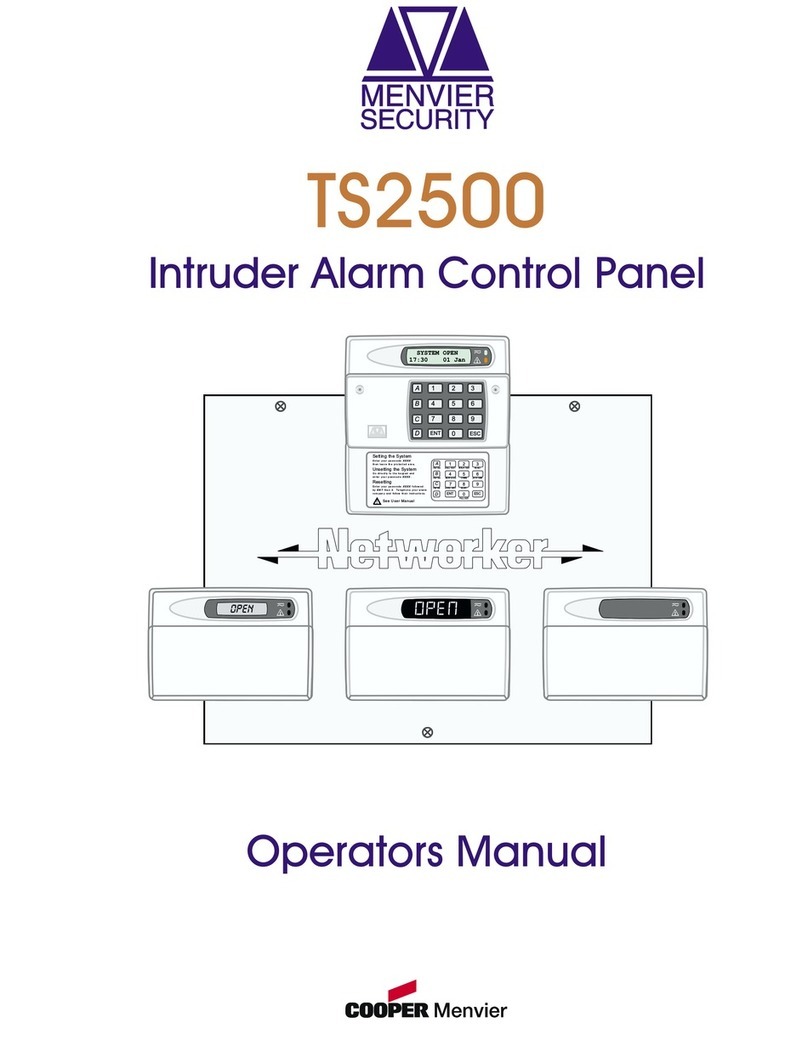
Menvier Security
Menvier Security TS2500 User manual

Menvier Security
Menvier Security TS590 Assembly instructions

Menvier Security
Menvier Security TS400 User manual
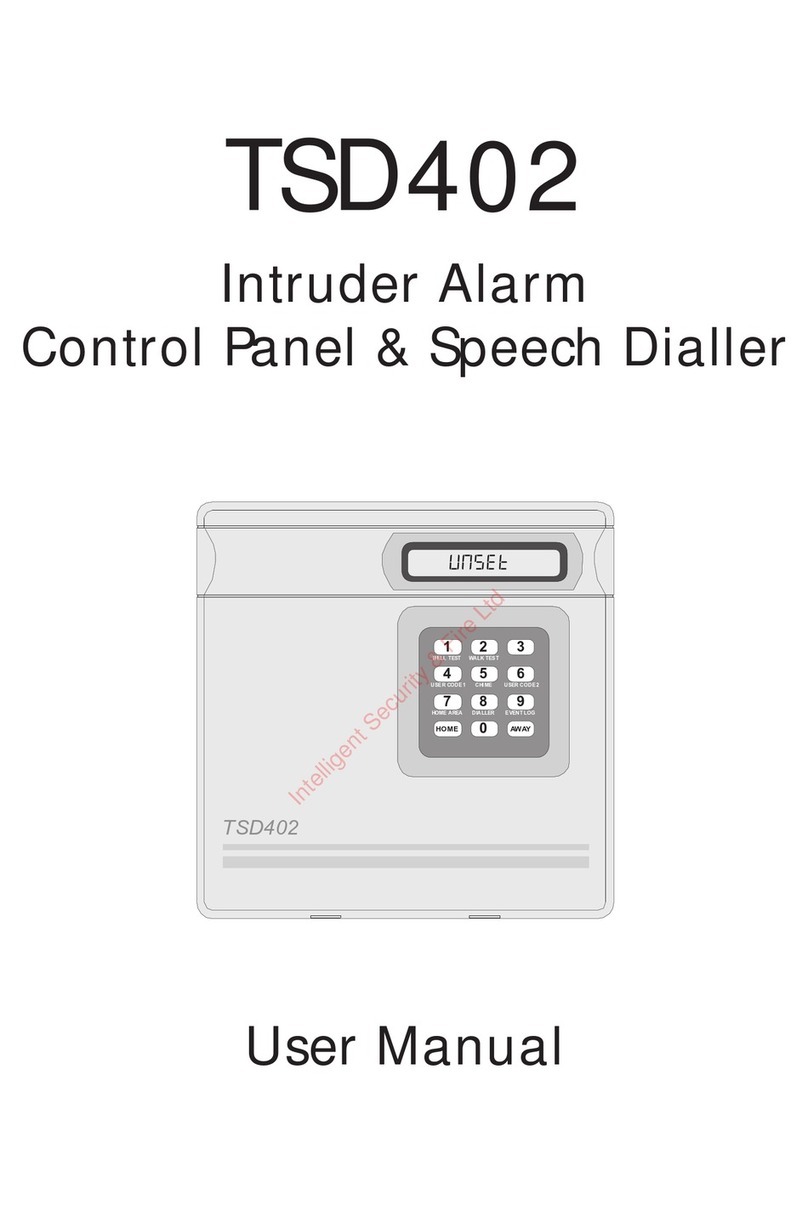
Menvier Security
Menvier Security TSD402 User manual
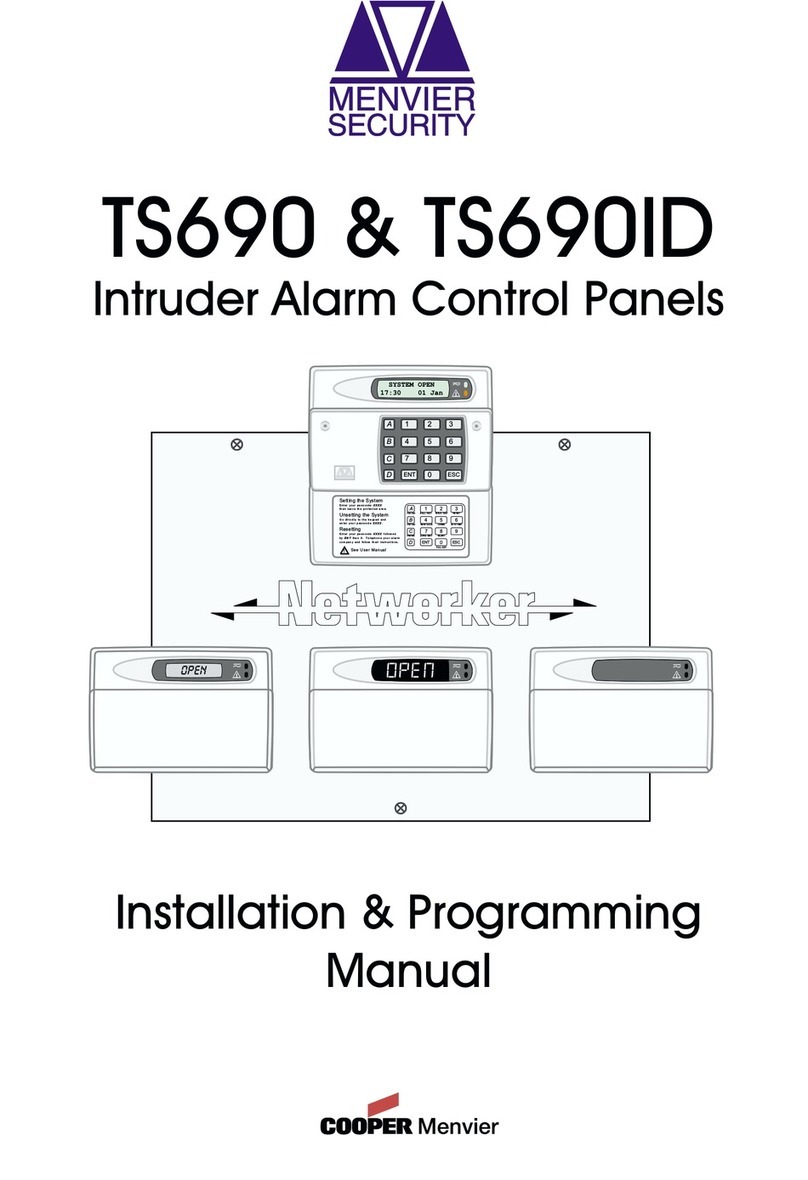
Menvier Security
Menvier Security TS690 Assembly instructions
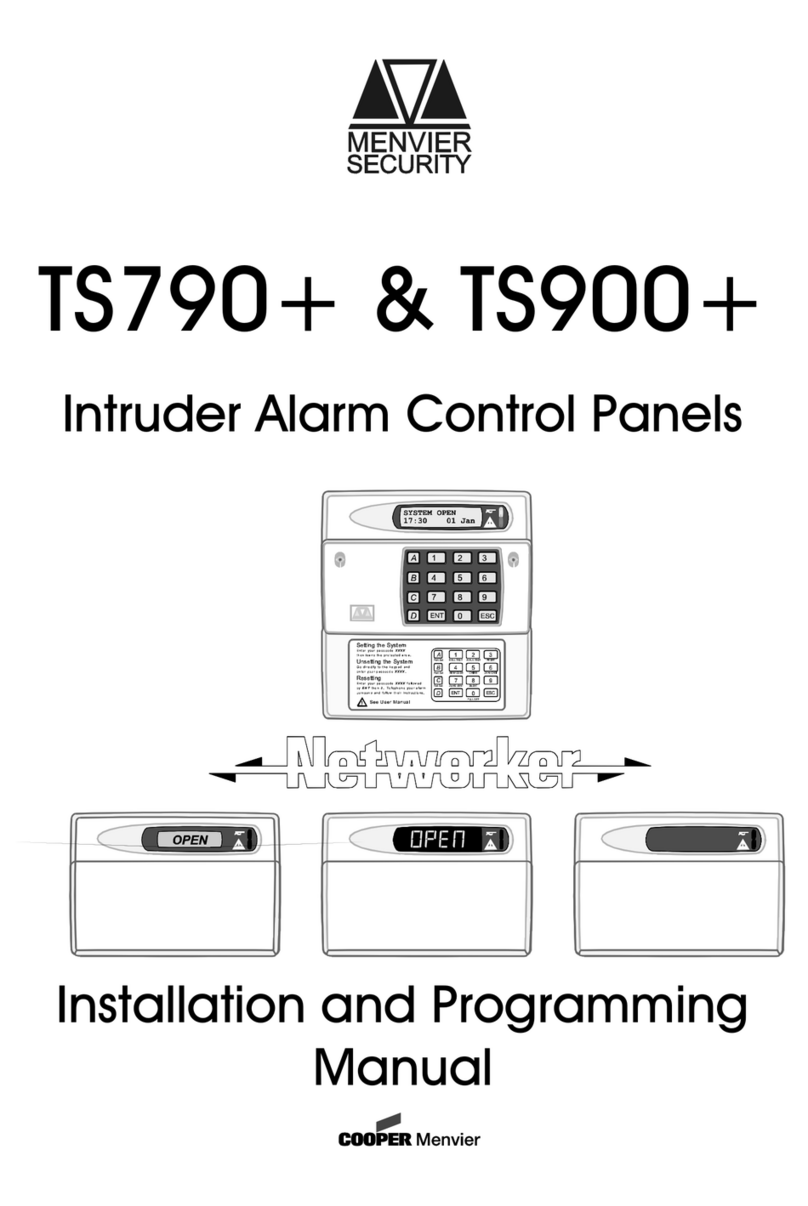
Menvier Security
Menvier Security TS790+ Assembly instructions
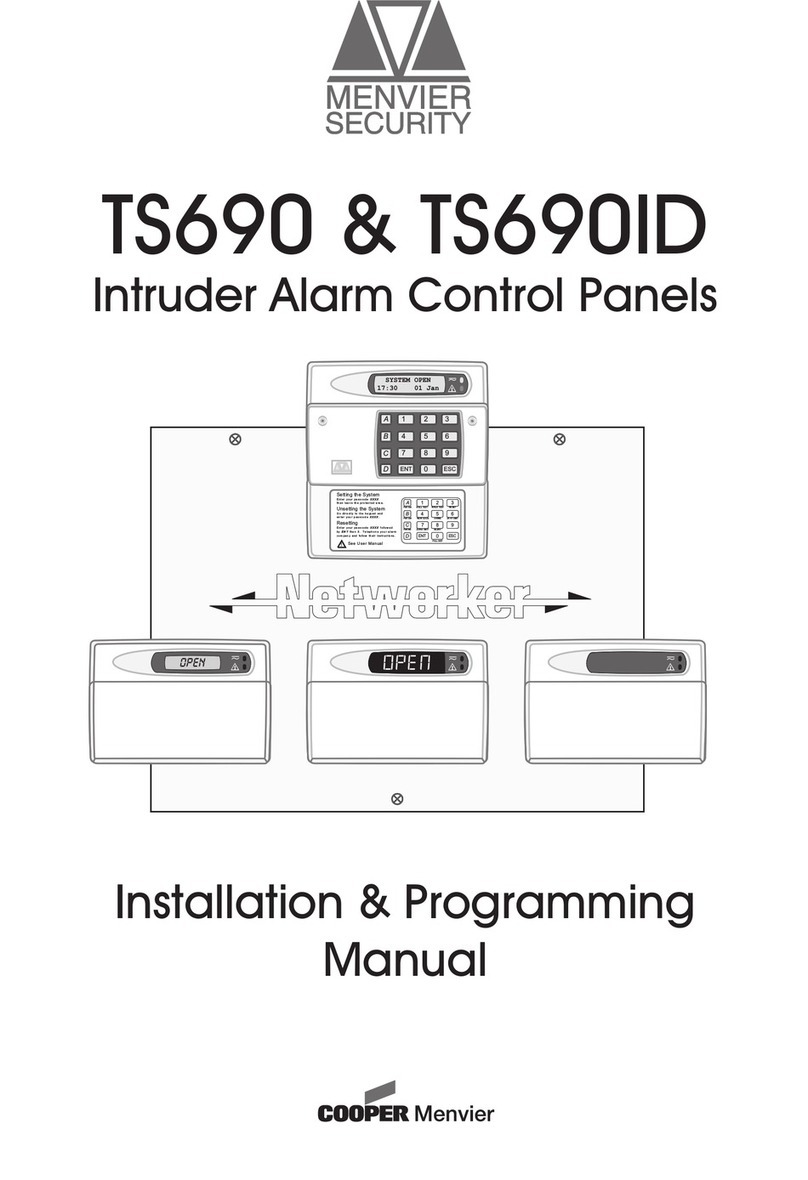
Menvier Security
Menvier Security TS690 Assembly instructions

Menvier Security
Menvier Security TS690 Assembly instructions
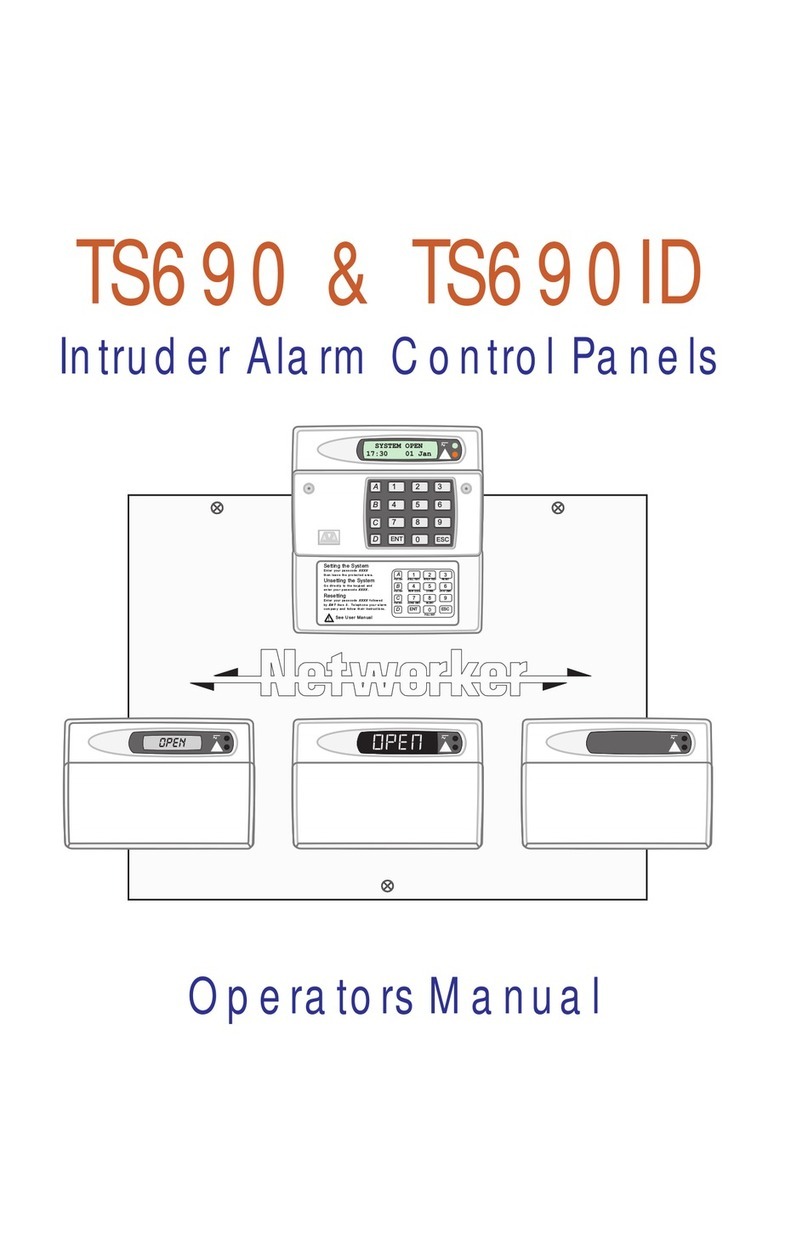
Menvier Security
Menvier Security TS690 User manual

Menvier Security
Menvier Security TS510 User manual
